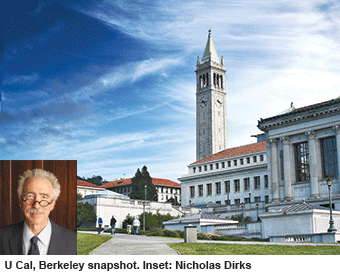 In recent years, several top-ranked universities around the world have undertaken institutional collaborations and set up branch campuses. The Middle East and East Asia have been among the most popular destinations for branch campuses designed to create regional bases, drive cross-border flow of students and boost parent institutions’ global reputations.
In recent years, several top-ranked universities around the world have undertaken institutional collaborations and set up branch campuses. The Middle East and East Asia have been among the most popular destinations for branch campuses designed to create regional bases, drive cross-border flow of students and boost parent institutions’ global reputations.
However, the appetite for this flavour of internationalisation is clearly cooling. Evidence from a recent survey of internationalisation staff working in Europe conducted by the European Association for International Education, shows that establishing offshore campuses is now the lowest priority. The focus is shifting towards student/academic mobility and establishing partnerships between global players.
The University of California, Berkeley is the latest institution to confirm this emerging pattern. Its new “global campus” will be built just a few miles north of its main site in the US, in the expectation that the world will come to California. Five universities from Europe, North America and Asia have already expressed interest in developing a permanent presence at the campus and the list of partners is expected to be finalised within the next year.
Joint research institutes will be set up, offering collaborative degrees and focusing on universal challenges, while at the heart of the campus will sit a global college for advanced study, designed to provide future world leaders with a firm foundation in issues such as democracy, trade and environment. Ultimately, the site could accommodate around 10,000 students, with the campus supported by partnerships with some of California’s leading high-tech businesses.
Nicholas Dirks, Berkeley’s chancellor, told Times Higher Education that California’s status as a “global melting pot” and its booming start-up culture has put the university in a privileged position to attract talent from around the world. “A lot of people want to come: increasingly they want to come not just because they like the weather or because they like the city, but because they want to have some access to the start-up culture and potentially to the capital that has also migrated there,” he says.
But the chancellor acknowledges that the decision to locate the global campus in California was also informed by recognition of the pitfalls tripping US institutions established overseas. For example, New York University has been under fire over the treatment of workers who built its campus in Abu Dhabi, while questions of academic and political freedom have haunted other institutions operating in Asia.
More local concerns are another key driver behind Berkeley’s approach, and these extend beyond a lack of space on the existing campus. Over the past few years, the University of California has suffered a series of budget cuts that carried the threat of repeated tuition fee rises, until a recent boost in tax revenue for the state offered hope of financial reinforcement. Yet the branch campus’ financial model will differ from the parent institution’s, focusing on philanthropy, bonds and tuition fees, plus rental income from partner universities. Professor Dirks believes this offers an opportunity for Berkeley to internationalise beyond the state’s control.
“Inasmuch as we have been effectively privatised by the state of California, this is an opportunity to develop a space in which we will develop different financial models and create a different set of global relationships that the state of California really would not, under any circumstances, be well equipped to manage or to sponsor.”
Prof. Dirks concedes that the think global, stay local approach is not without risk: it remains to be seen how much of the Berkeley experience can be offered on the new campus, and efforts will have to be made to ensure that the benefits of increased internationalisation flow back to the parent site. “My sense is that we will experiment with this over time,” he says.
(Excerpted and adapted from )